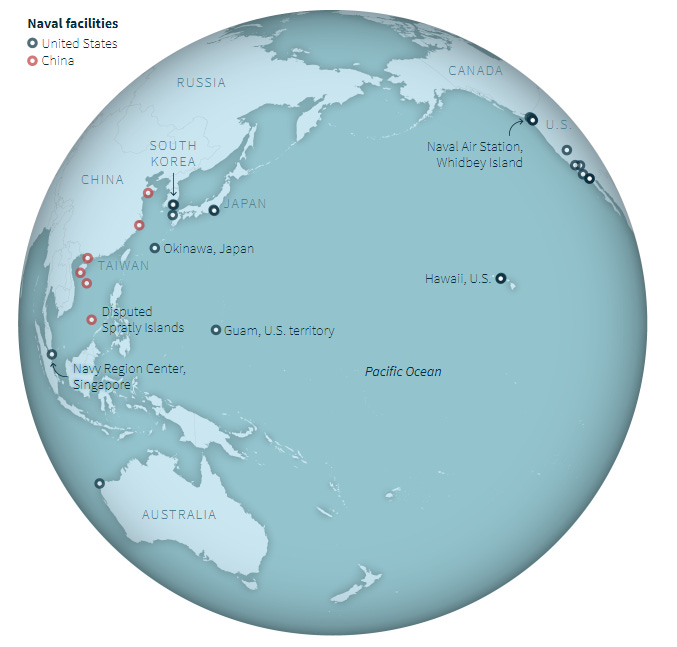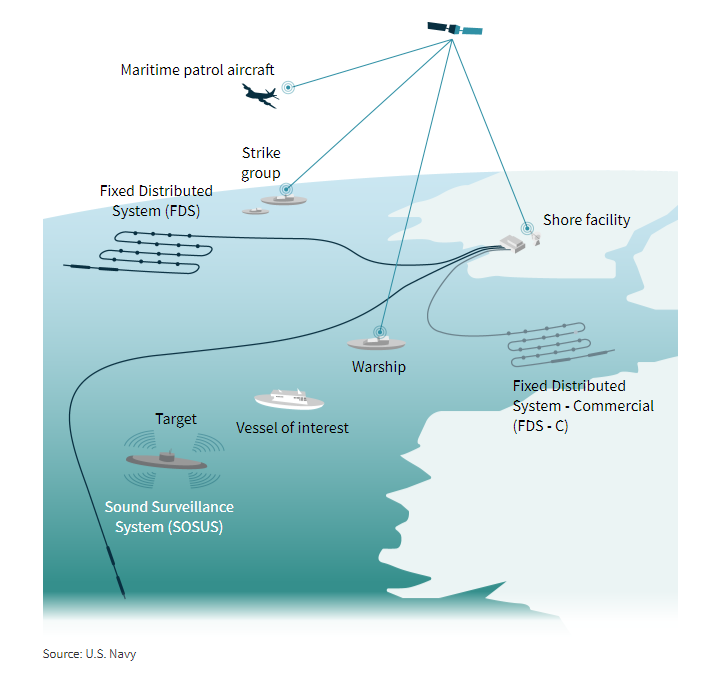The new tech we’ve developed this century that none of us should be speculating about must be incredible … and we should assume the People’s Republic of China is close to or past it in some areas - but if you don’t find open ocean ASW exciting, then I don’t even know you.
On a windswept island 50 miles north of Seattle sits a U.S. Navy monitoring station. For years, it was kept busy tracking whale movements and measuring rising sea temperatures. Last October, the Navy gave the unit a new name that better reflects its current mission: Theater Undersea Surveillance Command.
The renaming of the spy station at the Whidbey Island facility is a nod to a much larger U.S. military project, according to three people with direct knowledge of the plans: conducting the biggest reconstruction of America’s anti-submarine spy program since the end of the Cold War.
First of all; point of order. There is a difference between “reconnaissance,” “surveillance” and “spy.” Words matter.
Yes, the first two are French words and hard to spell, but even though “spy” derives from Old French “espie” and has been properly anglicized, that does not mean we have to use it.
Words matter. Spies are executed on the spot. Captured reconnaissance and surveillance forces are taken POW.
OK, enough of my preferred pedantry, back to the substance;
The most innovative change in the Navy’s ocean reconnaissance system is an investment in new technologies to miniaturize and globalize traditional maritime surveillance tools. The original network of fixed spy cables, which lie in secret locations on the ocean floor, was designed to spy on Soviet submarines seven decades ago, the three people said.
The Navy’s plan includes deploying a fleet of unmanned sea drones to listen for enemy craft; placing portable “underwater satellite” sensors on the seafloor to scan for submarines; using satellites to locate ships by tracking their radio frequencies; and utilizing artificial intelligence software to analyze maritime spy data in a fraction of the time human analysts would usually take.
The “can’t take the seastate” tinker-toy surface drones are for show - the cool stuff is playing in between the seabed and the surface … and other things not mentioned nor should be mentioned.
The existence of the IUSS was only made public in 1991 at the end of the Cold War, and the details of its operations remain top secret, the three people said. The three spoke about the classified program on condition of anonymity.
Reuters was able to piece together details of the unit’s plans through interviews with more than a dozen people involved in the effort, including two current Navy staffers working on maritime surveillance, advisors to the Navy and defense contractors involved in the projects.
The news agency also reviewed hundreds of Navy contracts. That examination identified at least 30 deals linked to the surveillance program signed over the last three years with defense giants as well as a string of startups working on unmanned sea drones and AI processing. A Reuters review of ship-tracking data and satellite imagery also revealed new details about the Navy’s secretive underwater cable laying.
Anti-Submarine Warfare has always been a science game. A patient game. A game of keeping your secrets.
One thing you cannot contain however, is math and computing power … and the smart people writing the best code.
It isn’t so much what you collect - but how you are processing it.
The USN has rightfully been very proud of its technical and manufacturing edge in submarines - and in some circumstances a submarine is not the best way to locate, track, and attack a submarine.
Yes, the PRC may be behind in submarine construction - but not too behind if we are trying to get in front of the curve to re-boot our languishing IUSS cadre. One thing we all should know by now; they are not behind in math and increasingly computing.
You can’t keep math inside the SCIF. Keep that in mind.
You really should read it all to catch up with what developments are available open source. You can bet what is rightfully hidden is even more interesting - but that is for those who are fighting that fight to know.
I do want to end with this reminder of our national lack of seriousness in addressing the challenge from the PRC.
As anyone, like me, who has kids at top-notch STEM schools can tell you - in the hard sciences a large portion of our few spots in our best research institutions in the hard sciences and math are being taken up by PRC nationals.
They are not studying sociology of gender theory - they are studying math, physics, engineering, and computer science. They don’t have to steal anything. The most valuable thing they carry is in their brain that they learned while here.
American taxpayers and the citizens of friendly nations are not being trained at our best institutions because the slots they would fill are instead being taken by PRC citizens - because university administrators like the cash they bring with them. University administrators are trading their nation’s security for money. There is a word for that.
That needs to stop, or at least be cut by 90%. We can let PRC nationals study history, sociology, economics - heck even medicine (not involving gene therapy or epidemiology though) - but dual use hard sciences?
No.
We can’t fix the past, but we can stop making it worse.






Love that opening line about a windswept island. Makes Whidbey sound like a hardship tour and remote like Attu.
When my son was in the electrical engineering program at a state engineering college he mentioned how many Chinese students were in the program. You see it everywhere and it does need to stop. We are training our enemy with our latest technology and techniques. Much of the tech that goes into our military equipment is first developed by teams of grad students working on basic research. Medical/biological studies is the same way, Duke University had a section of a large apartment complex rented just for the Chinese National grad students that attended the school. We are our own worst enemies.